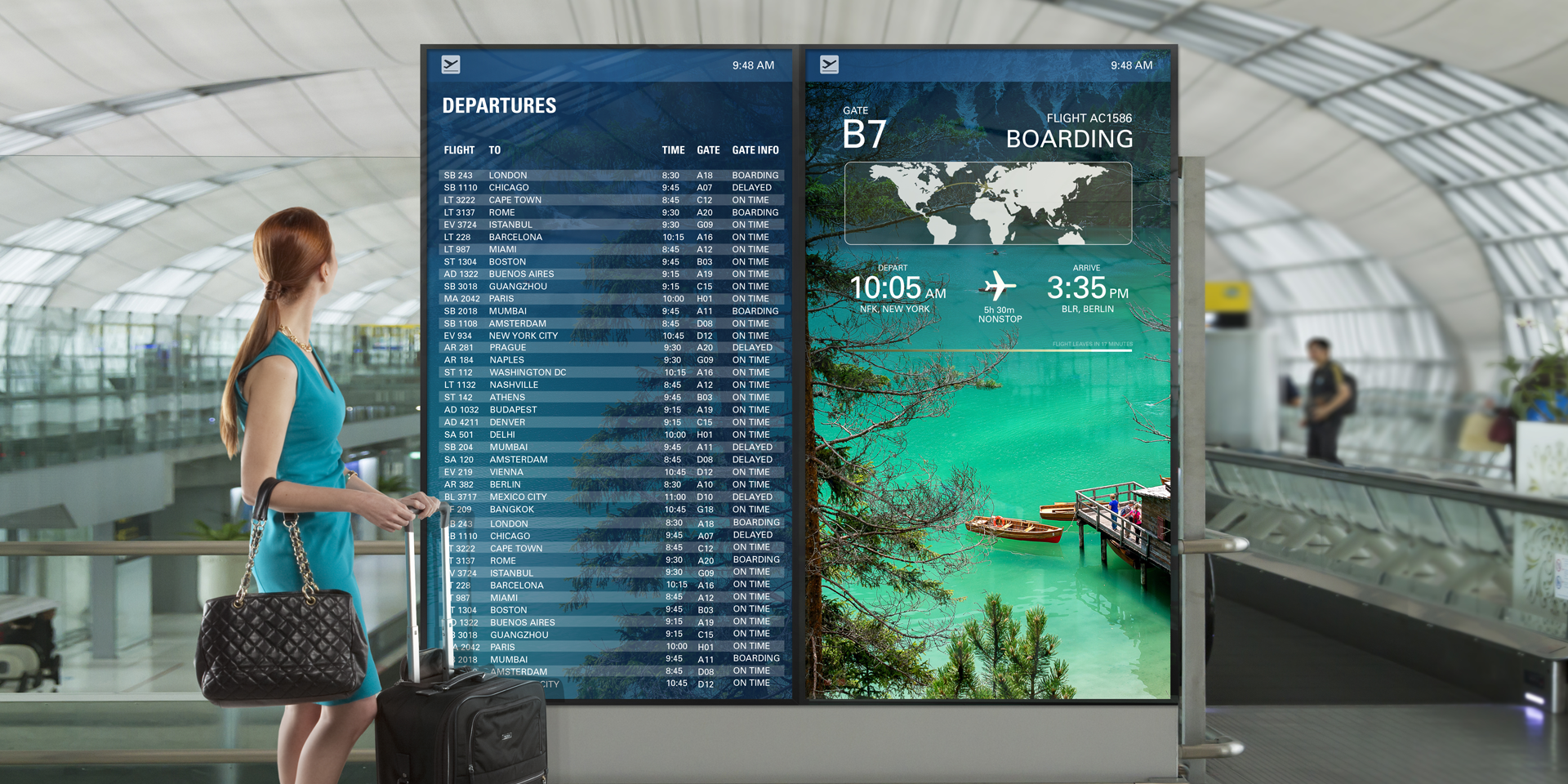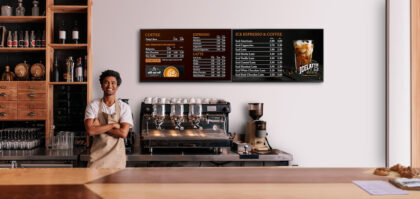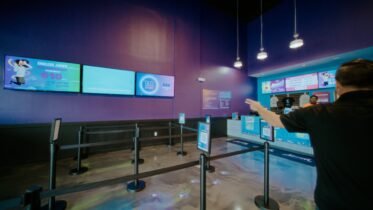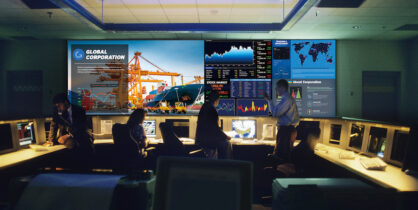As businesses and public spaces continuously recalibrate to the uncertain times brought on by the pandemic, a huge need has emerged for nimble tools that can communicate the changes to customers.
Handwritten paper window signs and marked-up whiteboards can communicate new guidelines, revised hours and services — as instant but temporary fixes. These are being upgraded with digital display technology that solves new problems and keeps pace with near-steady change.
Display technology, integrated with smart sensors and software, can also manage and automate tasks — like controlling building access and regulating capacity.
Minding the gateway
In some cases, efforts to maintain physical distance between customers have limited how many people can be inside businesses at any given time.
Staff and outside contractors are required to function as gatekeepers — managing outside lineups and letting people in as an equal number of them leave. Even paying workers minimum wage can add more than $3,000 a month in labor costs for a 12-hour-per-day business — at a time when sales and other revenues may be down because of the lowered capacity rules.
Technology can solve that problem — and return on the investment in a matter of weeks — so staff assigned to the gatekeeping task can go back to more meaningful, rewarding work. These well-established technologies can automatically meter foot traffic and manage access through entries, whether at a grocery or a public facility.
Digital signage content management made easy
Get your complete guide to configuring and tailoring real-time messaging using an integrated CMS. Download Now
For smaller establishments like convenience stores and quick service restaurants (QSRs), proximity sensors and other low-cost internet of things (IoT) devices can send content to a display at the entry, asking people approaching to wait or allowing them to enter. Think of it as a traffic light for visitors.
More sophisticated systems use artificial intelligence (AI) — via cameras or IoT crowd density sensors — to provide real-time estimates of capacity levels and relay that back to entryway screens. Married with analytics software, these systems can provide visitors with helpful information, such as estimated wait times. The screens can also cycle through other information, like slow and peak hours, as well as alternatives like online ordering and services.
Thermal camera technology is also being paired with entryway screens everywhere from stores and workplaces to entertainment attractions, confirming on digital displays that visitors don’t have high body temperatures indicative of illness.
Keeping current with communications
Digital signage technology is an effective, well-established tool for targeted advertising and promotions in retail and other consumer environments. COVID-19 has elevated the value of instantly updatable screens, which can keep up with the pace and breadth of changes happening at the places consumers visit daily.
Paper printouts and makeshift signs have gone up to inform visitors of new safety rules and updated ordering processes. These messages are necessary, but they detract from the store design and experience that operators want to deliver.
Supported by a straightforward but sophisticated content management system (CMS), smart displays — which come in a variety of sizes — offer businesses numerous advantages:
- Messaging can be updated quickly, and as often as needed. It can even be automated, when paired with real-time data from store or facility management systems.
- Bright, vivid graphics and video draw eyes more effectively than static messaging on printouts or posters.
- Disrupted supply chains and increased buyer demands have caused steady fluctuations in product availability for everything from disinfectant wipes to webcams. Retailers can maintain status screens at store gateways, displaying what’s in stock and what isn’t, to manage expectations as shoppers arrive.
- Visitors are reassured by information on how the store’s interior is being kept safe and sanitized.
- Store operations messaging can be mixed with promotions. As the health crisis fades, those screens can be migrated to full-time visuals that support business goals.
Pushing business outside
With a bulk of their daily sales now coming from motorists, QSRs are using high-brightness, daylight-ready displays to enhance their drive-thrus. Operators who can’t add drive-thrus are using lot-facing window displays to promote and manage curbside pickup of online orders.
Sit-down restaurants that want to reduce indoor seating are expanding to sidewalks and patios to increase their capacity. Samsung’s Terrace edition of its new Pro TV series allows managers to update outdoor screens from their smartphone, and they can seamlessly switch on-screen content from business messaging to live TV.
Restaurants and other businesses are also turning to interactive touchscreen displays to minimize one-on-one contact at order counters. While screens, like any surface, can host pathogens, they’re easy to clean and present less risk than face-to-face interaction. Plus, they improve order accuracy.
Experience meets utility
The challenges of the pandemic have highlighted the value of digital signage technology — both indoors and outdoors — in optimizing the utilitarian tasks that are helping businesses get safely back to work. Not only will digital displays prove invaluable in guiding your employees and site visitors through appropriate safety precautions, but real-time digital messaging will undoubtedly become an indispensable fixture for more businesses in the new normal, and will prepare them for any unforeseeable events in the future.
Explore how corporate offices are producing dynamic, engaging content for workers and clients alike in this free white paper. And discover 7 ways you can drive ROI with Samsung Pro TV.









